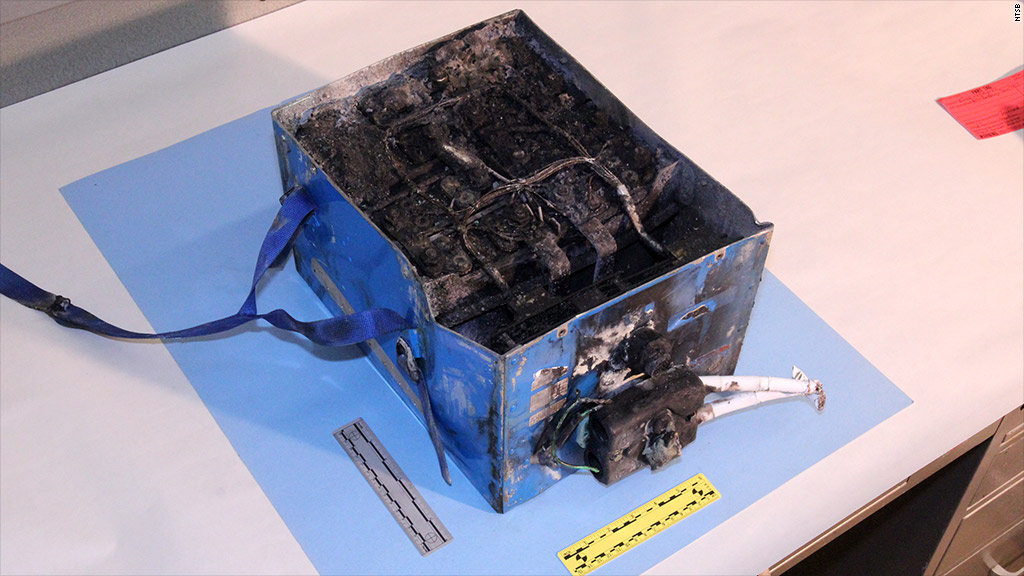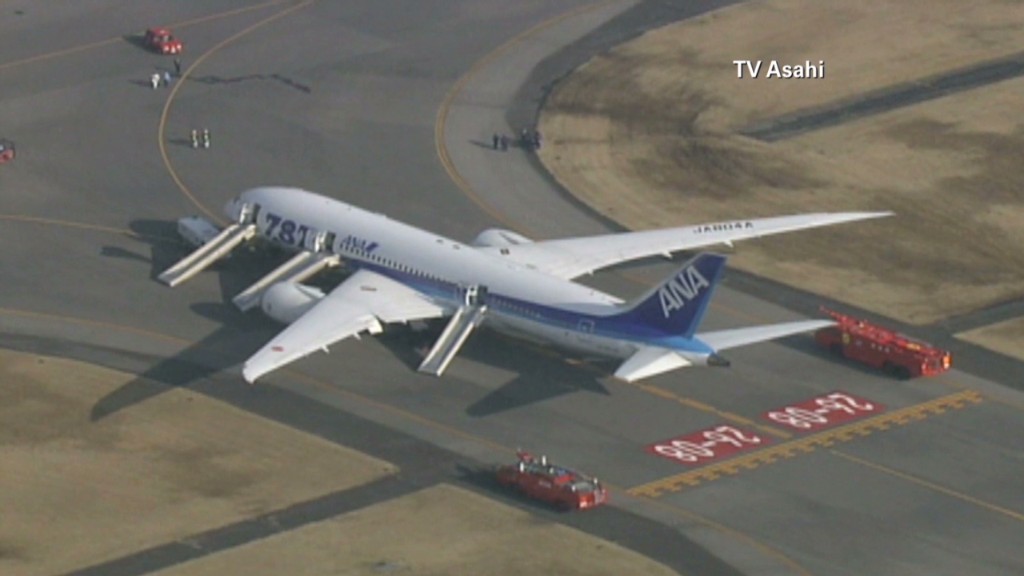
U.S. officials grounded Boeing's new 787 Dreamliner because the aircraft's advanced batteries appear to be malfunctioning. But what's the problem? And can it be fixed?
To reduce weight on the plane, Boeing relied heavily on lithium ion batteries -- the same type found in mobile phones and laptops.
While these batteries can produce a lot of power for their weight, they're also prone to problems. It was these same batteries that caught fire in laptops a few years back and, more recently, were suspected culprits in electric car fires.
How they work: Ions from the element lithium tease out energy from the battery's electrodes, according to Donald Sadoway, a materials chemistry professor at the Massachusetts Institute of Technology.
This is different from other types of batteries commonly used in electronics, which use a combination of nickel and cadmium or lead and acid, among other things.
Why they're better: Lithium is the lightest of all metals, so its ions hold energy more efficiently -- more than twice as much per unit of weight as nickel cadmium batteries.
This made the batteries attractive for Boeing (BA), which used them to electronically assist some of the functions that were previously performed using hydraulics. A lighter plane is more fuel efficient, which is one of the main selling points for the 787. Other aircraft makers have also been using more lithium ion batteries.
Related: Boeing's Dreamliner fleet grounded
In addition to being light and packing lots of power, lithium ion batteries also require less maintenance. There's no need to fully drain the battery before recharging, as was the case with older nickel cadmium batteries. Plus, they may be less environmentally toxic during disposal.
What's the problem? In addition to being the lightest metal, lithium can also be unstable when combined with other elements. Because of this instability, the batteries are subject to catch fire if they are over charged -- as was the case earlier this month with a 787 at a Boston airport.
To make matters worse, the fires they generate are extremely difficult to put out. The Boston fire took 40 minutes to extinguish, said Cosmin Laslau, a mobile energy analyst at Lux Research, a consulting and research firm focused on emerging technologies.
"Conventional fire extinguishers do not work," said Laslau. "Unless firefighters have specialized materials, you may just have to let the fire burn itself out."
The batteries are also about 40% more expensive than nickel cadmium, and some may not hold a charge very well after a few years.
Can it be fixed? Fixing the fire issue is obviously the main problem. Boeing chose a particularly risky type of chemical makeup in its lithium ion battery, one that provides more power but does not stand up well to overheating, said Laslau.

"Boeing made a conscious design decision, and is now paying the price," he said.
The automakers have been working on the fire problem by using lithium ion batteries with a slightly different chemical makeup, said Laslau, one that is a bit more expensive and provides a bit less power but is more stable. They have have also employed better electrical wiring and systems to manage the battery.
That, he said, is what Boeing will likely need to do.

